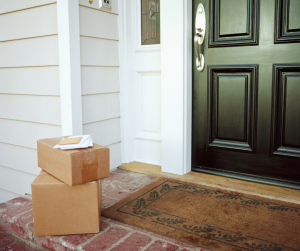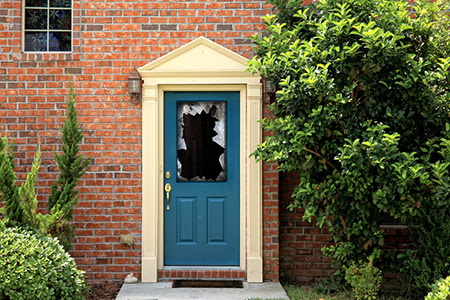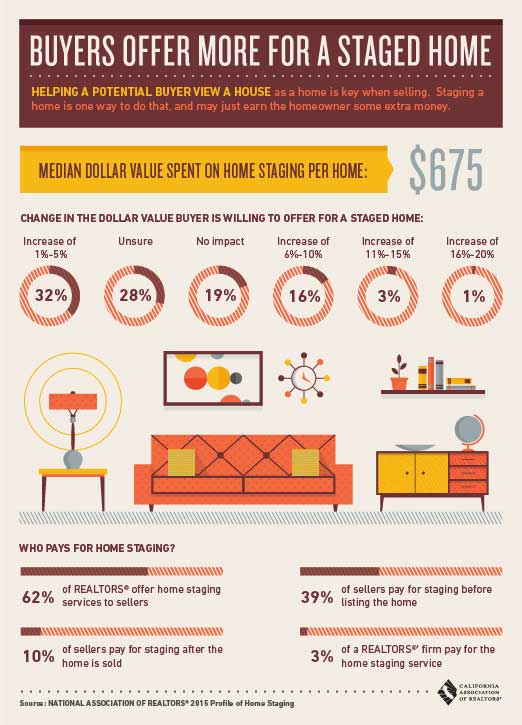Special Delivery! How Video Cameras Can Help You Keep Track of Packages


As convenient as online shopping is for consumers, it’s even more convenient for package thieves.

Families are shopping online more than ever before, and for a good reason—the web allows every store to compete for your business with instant comparison shopping, and to deliver your hand-picked items straight to your doorstep with a few quick clicks. Who wants to fight through lines in a crowded department store when it’s so easy to shop from the couch?
As convenient as online shopping is for consumers, it’s even more convenient for package thieves. It’s not unheard of for homes that used to receive packages once in a blue moon to now receive deliveries on almost a daily basis (especially during the holiday season). This makes entryways and driveways prime targets for criminals who can slip on and away from your porch without a trace.
According to findings from a new Wakefield Research poll for Comcast, 3 in 10 Americans who live in houses or townhomes have been victims of package theft. And 53% of Americans know someone who has had a package stolen from outside their home.
Thankfully, today’s smart security cameras can help you stay on top of every delivery and get those holiday packages safe and sound.
Outdoor Cameras
Battery-powered outdoor cameras from companies like Nest and Canary are a great way to stay on top of activity in your driveway. Manage them with a mobile app, and integrate all your connected devices through a smart home hub from your internet service provider, and you can receive instant alerts the moment a delivery truck rolls up. Most cameras offer motion-based recording that can help catch suspicious characters, and many offer powerful night vision sensors that can detect even the sneakiest thief when they think they’re imperceptible.
Indoor Cameras and Doorbells
When it comes to protecting your porch, indoor security cameras facing a window are a great option, as are products like the Ring video doorbell. Video doorbells offer live video and two-way talk, allowing you to verbally accept deliveries when you’re not at home, direct delivery people to leave boxes in a more conspicuous spot, or ward off “porch pirates” before they even have a chance to touch your packages.
For a comprehensive solution, you can integrate your cameras, doorbell and lights into a full-home security system with professional monitoring, protecting your home, inside and out, 24/7.
Whichever devices you choose, mount them so that they’re visible to deter nefarious activity. Angle the cameras so that they’re sure to capture the image of any faces. That way, if the worst does happen, you’ll have a high-quality recording to hand over to law enforcement officers.
Don’t let your online shopping habit turn into a magnet for crime this holiday season. Keep an electronic eye on your front door, and ensure that your holiday packages arrive safely.
Eric Murrell is a software developer and technology contributor to XFINITY Home. He enjoys sharing tips on how people can benefit from incorporating smart home automation and security in their homes on his blog At Home in the Future.
Source: CB Blue Matter Blog
What You Need to Know About Solar Panels


Once you have decided to install solar panels, it’s important to research which solar panels are best for you, your home and your budget.
Guest post by Lauren White
The solar panel industry has developed exponentially, in the past decade. Much of that is owed to increased demand. According to the Department of Energy, Americans use 23 times more solar energy now than we did around ten years ago.
Homeowners have more solar energy options than ever before. In order to meet demand and outshine the competition, companies are putting their resources toward research and development. They are constantly working toward creating more efficient and innovative solar energy technology.
Once you have decided to install solar panels, it’s important to research which solar panels are best for you, your home and your budget. There are generally three solar panel choices for residential homes: Thin-Film, Polycrystalline and Monocrystalline. These three panels are part of solar photovoltaic (PV) systems, which means they convert the sun’s photons into electricity.
Thin-Film
Perfect for: The homeowner with a small budget, a low-to-average rate of energy consumption, and lots of area for installation.
The cells of thin-film panels are constructed by layering photovoltaic material on glass, metal or plastic. These layers can be measured in nanometers, significantly thinner than in traditional panels. Their thin construction makes them lightweight and flexible, and they have a low cost of production. As such, they come at a lower cost to consumers.
One drawback of this technology is its rate of degradation. These solar panels have an average life expectancy of 10-15 years, depending on the photovoltaic material used. Comparatively, monocrystalline solar panels have a life expectancy of 25-35 years.
Another drawback is their low efficiency rating of 7-15%. This rate doesn’t work well for homes consuming more than the national average of 11,000 kWh per year. Also, these panels must be installed over a significant amount of space, which can be a deterrent for homeowners with limited area for installation.
In recent years, technology has improved and certain thin-film technologies are pushing past 20% efficiency. With a higher efficiency rating, this technology can meet higher energy demands and become a greater competitor in the market.
Polycrystalline
Perfect for: The eco-conscious homeowner with wiggle room in their budget, an average rate of energy consumption, and perhaps a penchant for the color blue.
Polycrystalline panels are constructed by melting silicon into molds to create perfect square “wafers.’ These wafers of silicon are then installed on a grid to form the panel. The cost of making these panels is relatively low and the process produces minimal waste. This makes polycrystalline a more affordable option than the original solar panel, monocrystalline.
The efficiency rating for polycrystalline panels is typically 13-16%. They would perform best in homes with typical rates of consumption. You will still need a significant amount of installation space, for these panels, in order to achieve optimal benefits. You must also take into consideration whether or not your taste will agree with their blue tint.
Monocrystalline
Perfect for: The homeowner with less roof space for installation and/or a higher rate of energy consumption, who wants a longer-lasting product and can make a sizeable investment.
Monocrystalline panels were the first solar panels to be made available. Currently, they are some of the most expensive. Each panel is created using high-purity silicon cut into “wafers.” These silicon wafers are extremely efficient at converting photons into energy, with monocrystalline panels hovering around a 22% efficiency rating.
Since these panels can convert more energy per square foot, you won’t need as much space for installation. Greater energy conversion also means you’ll be able to power more appliances, like hot tubs, heated pools and electric cars.
Get What You Pay for—and Then Some
In most cases, homeowners surveyed by HomeAdvisor say the cost of installing solar panels is much less than their projected energy savings over a twenty year period. In fact, it’s been estimated that, in 2017, homeowners in Massachusetts and California will save double their investment in solar energy.
Calculate Your Estimated Savings
If you’re not sure of your ROI, Google has a convenient tool called Project Sunroof, which will calculate your estimated savings based on your specific home address. As for your installation cost, you can request local estimates through HomeAdvisor to get a realistic figure for budgeting.
While you’re doing your research, or when you are speaking with a professional, see what’s new and on the horizon in the industry. These technologies are developing so rapidly, there are breakthroughs on a yearly basis. In July of 2017, for example, scientists developed a solar cell with 44.5% efficiency. There is hope that this technology, and others like it, can be streamlined and integrated into the residential and commercial solar market.
Source: Coldwell Banker Blue Matter Blog
Pool School: A Study Guide


Armed with a little know how – you can make your pool season trouble free!
1. Evaluate the Task at Hand
Always check for leaks at the start of the season—all you need is a bucket. Just fill it three-fourths of the way full and mark the water line inside, place it in the pool, mark the line on the outside and let it float for a couple days. If the water goes down the same amount inside and out, it is from evaporation, but if it goes down more on the outside, there is a leak and you’ll need to call a pro.
2. Keep It Clean
- Skim Debris – If you have trees, bushes or other plants nearby, the wind can blow debris into the pool. To keep it clean, increase the water circulation and use fewer chemicals, and use a skimmer to scoop out the debris out on a weekly basis.
- Vacuum Frequently – Not all debris floats on top, so to get the hard-to-reach debris, you should vacuum the pool on a weekly basis for about half an hour. You can always buy an automated vacuum that runs on a schedule, so you don’t have to worry about it.
- Filter and Pump – To keep water clean and save energy, run the pump daily for every 10 degrees (e.g., if it’s 80 degrees outside, run the pool pump for eight hours). Keep water healthy and clear by cleaning the filter every other week. Simply empty the filter bag or remove the filter and hose it down. If the pump is unusually loud, leaking or doesn’t hold pressure, it’s time to call a professional. If you have a home warranty with pool coverage, you’ll also save time and energy not having to find a qualified service professional yourself.
3. Get an A in Chemical Chemistry
Test water levels weekly with a home pool water test kit to make sure chemicals are balanced and safe. Optimal chemical levels vary depending on the season and weather conditions, but the pool’s pH levels should fall between 7.2 and 7.8 consistently for the cleanest water. This will also help protect your pool equipment. Water becomes more acidic with lower pH levels, which can cause costly damage to your pump, filter and anything else that it comes in contact with.
Source: RisMedia
4 Steps to Take After Your Home Has Been Burglarized


Your worst nightmare…arriving home to find that you have been the victim of a burglary. Home Invasion. Loss of your precious privacy and belongings. While nothing can take away that feeling, here are a few steps you can take while you recover from the shock of it all.
What would you do if you came home and found your house was broken into and your property stolen? For millions of Americans every year, this nightmare is a reality. In 2010, there were 2,159,878 burglaries in the U.S., equivalent to nearly 700 break-ins per 100,000 people, according to the Federal Bureau of Investigation.
Most victims in this situation find themselves totally unprepared and at a loss for what to do. Fortunately, there are steps you can take to regain control of the situation, improve the odds of recovering your property, and prevent your home from being broken into again.
Call the Police
Call the police when you spot the first sign of a break-in. The intruder may still be on your property and pose a threat to your safety. Seven percent of all home burglaries involve violence against household members, according to the Bureau of Justice Statistics.
You also need to call the police to get your case on file for insurance and legal purposes. A police report and investigation increases the strength of your insurance claim, as well as your odds of retrieving your property. The police also need to record crime scene evidence which can help convict suspects if they are caught. Don’t touch anything before the police arrive so that you don’t accidentally destroy evidence, such as fingerprints.
When the police arrive, they will want you to file a report. Take pictures to document what was stolen, and provide the police with a list of everything that was taken and its approximate value. As a preventive measure, it’s wise to take an inventory of valuable items ahead of time in case you are ever robbed.
Call Your Insurance Company
You should also copy your list of stolen items for your insurance provider. To maximize your odds of receiving reimbursement for stolen items, contact your insurance provider within 24 hours. They will need your police report to process your claim, so make sure you have already filed a police report before calling. Your insurance provider will probably send an adjuster to review the crime scene, so in order to avoid disrupting the evidence, you may wish to stay somewhere else until they arrive, if possible.
Review Your Security Camera Footage
If you have security cameras installed on your property, you should review them to see if there is any additional evidence. If you’re fortunate, you may have captured footage of the burglar breaking in, walking through rooms, or rummaging through items. You may also notice more clues or additional information about which items were stolen. Provide copies of any relevant footage to the police and to your insurance provider.
Evaluate Your Home Security
After the police and your insurance adjuster have finished reviewing the crime scene, you can begin cleaning up. You should also conduct a review of your home’s security with an eye towards preventing future burglaries. Once burglars have successfully broken into a home, they often return in the future, so it’s important to make sure you secure any vulnerabilities that enabled the initial break-in. The National Crime Prevention Council provides a home security checklist you can use to review your home security and identify any vulnerabilities that need to be fixed.
Having your home broken into is a traumatic and disturbing experience, but taking these steps can help you recover and restore your life to order as quickly as possible. Filing a report with the police, calling your insurance company, and reviewing your security footage will maximize your chances of getting your property returned and bringing those responsible to justice. Reviewing your home security can help prevent future burglaries and restore your peace of mind.
Source: RisMedia
Home Safety: How to Protect Your Family at Every Stage of Life


Safety…ALWAYS a concern. Here are some really practical tips throughout a lifetime of staying safe. Good to know!
We all want to keep our families as safe as possible, but home safety requirements change as your family grows and evolves. From newborns to pets, a variety of different strategies can ensure your home is as safe and accommodating as possible for your family. Here are some simple tips to help keep your family safe through every stage of life.
Getting Your Home Ready for a New Baby
Babyproofing a home is largely about protecting them from their own curiosity. Once a baby learns to crawl, anything in reach is fair game to be grabbed, touched, or chewed on.
1. Install baby gates to keep certain rooms off-limits. This is especially important near stairs.
2. Fill unused electrical outlets with plastic plugs. Outlets are like magnets for babies.
3. Store breakable items out of reach.
4. Keep small items out of reach, as well. Small objects that could be put into mouths are a major choking hazard. A good rule of thumb is if it can fit in an empty toilet paper roll, it is small enough for a baby to choke on.
Home Safety for Toddlers and Elementary-Age Children
Toddler-proofing is a little different from babyproofing in that a toddler is usually more resourceful about getting into things they shouldn’t be. Toddlers will climb, open doors and drawers, and generally get themselves into trouble.
1. Move anything small or breakable up higher now that your child is walking and climbing. You’d be surprised at what they can reach.
2. If you have a pool, build a fence around it. You’ll want a barrier at least a few feet high to make it harder for your toddler to climb over.
3. Secure drawers and cabinets with childproof latches.
4. Place safety locks on windows and doors to prevent them from being opened.
5. If you don’t have a home security system, install one for added safety. Choosing a system with the right features, like motion sensors and security cameras, can help you know if your curious toddler runs out the door or it can help you keep tabs on things while the babysitter is over.
Safety During the Teenage Years
As your child grows into their teens, the focus moves further from physical safety and more towards online safety and general home security. Online safety is extremely important with teenagers in the house.
1. Set clear boundaries and expectations with your teen regarding potentially dangerous situations. These could involve simple subjects like safe driving or complex topics like drinking and drugs.
2. Keep alcohol, firearms, and any prescription or over-the-counter drugs locked up in a safe place.
3. Educate your teen about safe internet usage. This includes avoiding malware, being smart on social media, and using privacy settings.
Pet-Proofing Your Home
Pets make great additions to the family, but they come with their own safety needs. In many ways, pet-proofing is similar to babyproofing. Pet-proofing involves keeping harmful items out of their reach and making sure that they can’t escape the house or yard and run off.
1. Keep cleaning products, chemicals, and medications in high places or locked where pets can’t stumble upon them.
2. If your pet likes to chew on (or eat!) household items, make sure that you don’t leave anything lying around. It can be helpful to do a quick walkthrough of your home a couple times a day, such as when you leave and return from work.
3. If you have a home security system, make sure the motion sensors are capable of detecting and ignoring your pets.
4. If you have a fenced yard, check it for weaknesses or small gaps that a pet could squeeze through.
Getting Your Home Ready for Your Parents to Move In
As our parents get older, it’s not uncommon for them to move in with us. This can help ensure their safety and prevent the loneliness that often comes with old age. It can also present some unique challenges when it comes to home safety.
Depending on your parent’s age and their physical and mental well-being, you may need to make small home improvements for their convenience or physical safety. In general, you’ll want to try to minimize the potential for falls and make sure that help is always within reach.
1. Install grab bars in the bathrooms near the toilet and shower. These bars can help support a person as they move in and out of the shower or tub, both making this task easier and helping prevent falls. Make sure they can support the weight of the person who’ll be using them.
2. Walk through your home and check for objects that might make tripping hazards. Throw rugs, children’s toys, and pet toys can all be dangerous for people lacking the eyesight or reflexes to maneuver around them easily.
3. Set up a medical alert system. This is a wearable device that essentially functions as a panic button—if a person falls or has a medical emergency, they can push the button to get instant access to help.
4. Learn which foods are hazardous for senior health. As your parents age, their immune system weakens, making them more susceptible to food poisoning and health risks. Prepare meals at home that won’t threaten the health of your aging parents.
Your family grows and changes as time goes by, and so should your home safety plans. If you want to keep up with each of your family members, continually assess their needs. These tips should give you a great starting point towards building a safer home for your family.
Source: RisMedia
Boost Curb Appeal in a Day…


Sometimes when planning to sell a house, in the name of renovating interior living spaces, updating bathrooms, replacing appliances and adding decorative touches throughout the bedrooms, homeowners leave outdoor curb appeal as a last priority. While of course the inside of a home is important, sellers make a big mistake when they neglect the exterior. Why is a home’s exterior so important? Consider this: Curb appeal is often a potential buyer’s first impression of a home, the very thing that helps him/her decide whether or not to come inside. Whether they’re shopping online or by cruising through neighborhoods, the outside of your property is the first thing they’ll notice. If you’re selling your home or about to, how can you quickly and effectively tackle the outdoor appeal? Here are some key tips for boosting the curb appeal in a way that means quick turnaround and increased home value:
1. Start with the Front Door. Believe it or not, your home’s front door can be one of its most important assets. A new steel entry door consistently ranks as one of the most rewarding projects in home repairs, yielding an increase in home value that’s greater than the costs to install one. Likewise, to make the door especially captivating, consider painting it a bold, pleasing color that will grab attention and add charm. When buyers see a new door that looks attractive, they see another asset that makes your home the one to buy.
2. Make Any Necessary Repairs. Is the driveway cracked or the front doorbell busted? Now is the time to call a repair company or get out your own toolbox to make repairs. Buyers want turnkey, move-in-properties, and that means they want properties with repairs already done. Do the work now to get your home in ship-shape condition.
3. Keep Up with Landscaping. From mowing the lawn to pulling weeds, make sure you’re keeping up with your outdoor landscaping so that your home looks presentable and well cared for at all times. Overgrown bushes and dying plants are a surefire signal to potential buyers that you’re not caring for your home and leaving more maintenance for them to handle.
4. Add Lighting. While most buyers will come visit your home during the daytime, it’s not at all unusual for the most interested ones to also drive by at night to see what nighttime curb appeal is like. Landscape lighting can make all the difference in terms of how a home looks, so make an investment in attractive lighting options that illuminate and add interest to your property. “Solar landscaping lights are a great addition to any yard because they don’t require complicated and expensive wiring,” says Bob Vila. “Remember, though, you get what you pay for—cheap lights won’t last as long and simply won’t look as good.”
5. Touch Up Paint. A fresh coat of paint is just as powerful outside as it is inside, so to update your home’s look, repaint the exterior or at least touch up problem areas. Another idea is to paint the trim a new color that creates either a nice complement or contrast to your home’s overall look.
6. Make Over the Mailbox. You might not think a mailbox matters much, but it’s yet another one of those little details that can add up together to make a strong impression on a buyer.
7. Add Outdoor Furniture. From rocking chairs on the front porch to an outdoor patio set on the back deck, outdoor furniture creates outdoor living spaces that expand your home’s appeal. Look for attractive, durable pieces that will endure weather damage and look good for years to come — whether or not you include these pieces with the home sale, setting them up is a great way to stage your home for greater resale value.
The bottom line when it comes to curb appeal is that a little investment today can add up to big rewards tomorrow. Take the time to update, clean, repair and add value to your property’s exterior now and you will make it more attractive to buyers, not to mention more beautiful to come home to. Use the tips above to get started now.
Source: Rismedia

 Facebook
Facebook
 Twitter
Twitter
 Pinterest
Pinterest
 Copy Link
Copy Link















